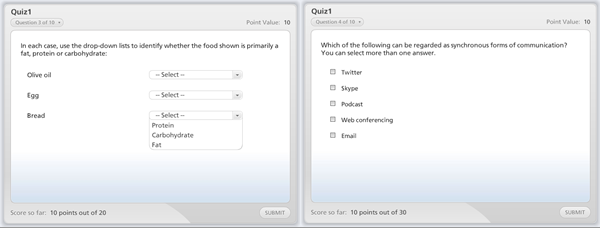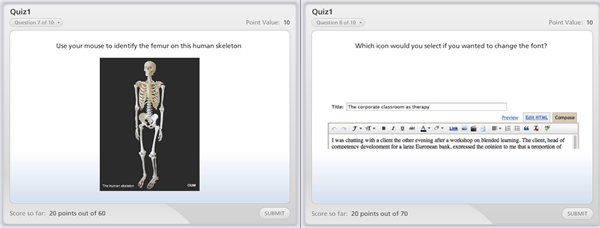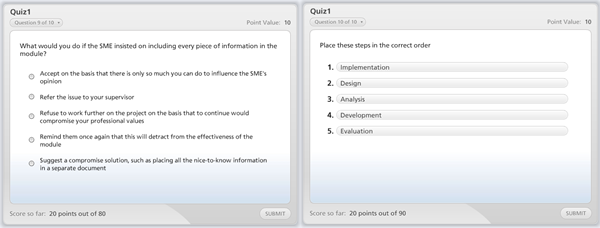![]() In part 1, we looked at the characteristics of online quizzes and explored how they could be used to assist or assess learning. In this instalment, we look at the various question formats and the types of learning for which they are suited.
In part 1, we looked at the characteristics of online quizzes and explored how they could be used to assist or assess learning. In this instalment, we look at the various question formats and the types of learning for which they are suited.
Factual knowledge
In an adult learning context, factual information is usually supplemental to the core learning objective and more often than not just for general interest. However, some facts really do need to be known by heart: When was … ? What is … ? Who is … ?
If it is essential that the learner can recall the information without prompting, then you have little choice than to ask a question that requires them to type the answer in. If it is only necessary that they are able to recognise the right answer, then various forms of multiple choice will do.

Conceptual knowledge
Concepts provide a common language for understanding a subject. Generally the aim is for the user to be able to identify the class or category to which given objects belong, whether these are tangible (like types of computer) or abstract (like schools of thought). The most common way of checking this knowledge is to provide the learner with examples and ask them to place these in the correct categories, as in the examples below:

Process knowledge
A process explains how something works as a chain of cause and effect relationships. To check understanding of a process, you can ask questions about causes or about effects, as shown below:

Spatial knowledge
In this instance our aim is for the learner to be able to identify the locations of parts of an object, device, physical space or system. The easiest way to check this knowledge is with a question that has the learner click on a given part as shown below:

Procedural knowledge
Procedural knowledge is tougher because in many cases what you really want to test is whether the learner can actually carry out the procedure rather than just answer questions about it. However procedural knowledge is a first step and you can use a variety of questions to check learning:

These examples were created in Articulate QuizMaker, although many quiz tools could do a similar job. In the next instalment we look at the principles underlying the writing of quiz questions.
